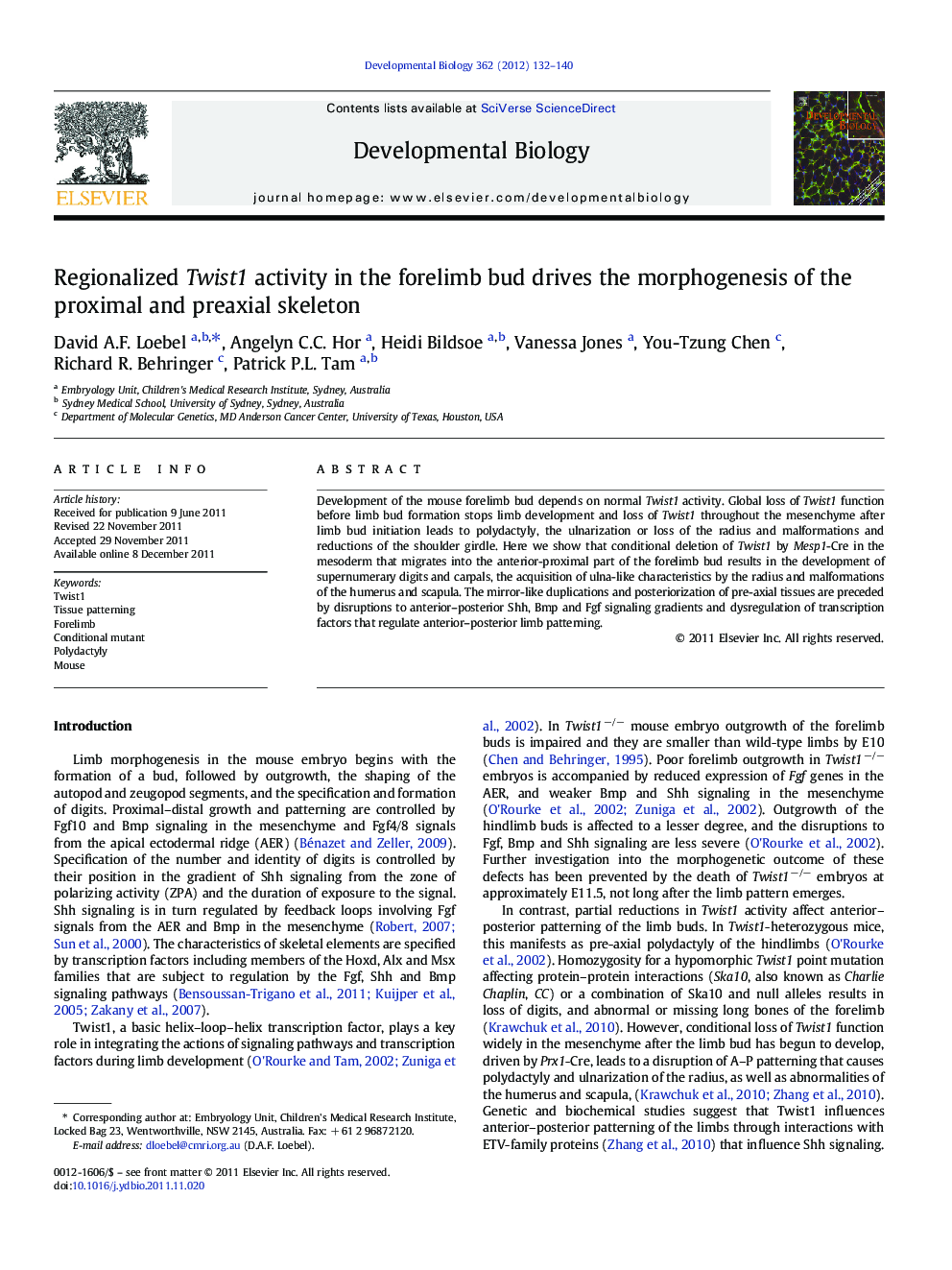| Article ID | Journal | Published Year | Pages | File Type |
|---|---|---|---|---|
| 2173417 | Developmental Biology | 2012 | 9 Pages |
Development of the mouse forelimb bud depends on normal Twist1 activity. Global loss of Twist1 function before limb bud formation stops limb development and loss of Twist1 throughout the mesenchyme after limb bud initiation leads to polydactyly, the ulnarization or loss of the radius and malformations and reductions of the shoulder girdle. Here we show that conditional deletion of Twist1 by Mesp1-Cre in the mesoderm that migrates into the anterior-proximal part of the forelimb bud results in the development of supernumerary digits and carpals, the acquisition of ulna-like characteristics by the radius and malformations of the humerus and scapula. The mirror-like duplications and posteriorization of pre-axial tissues are preceded by disruptions to anterior–posterior Shh, Bmp and Fgf signaling gradients and dysregulation of transcription factors that regulate anterior–posterior limb patterning.
Graphical abstractFigure optionsDownload full-size imageDownload high-quality image (122 K)Download as PowerPoint slideHighlights► Mesp1-Cre ablates Twist1 in mesoderm that goes to the anterior-proximal forelimb. ► Polydactyly, ulnarized radius with humerus and scapula abnormalities. ► Reduced proliferation, increased cell density in mutant tissue. ► Disrupts patterning: anterior genes downregulated, posterior genes expanded. ► Disrupted Shh, Fgf and Bmp signalling.
